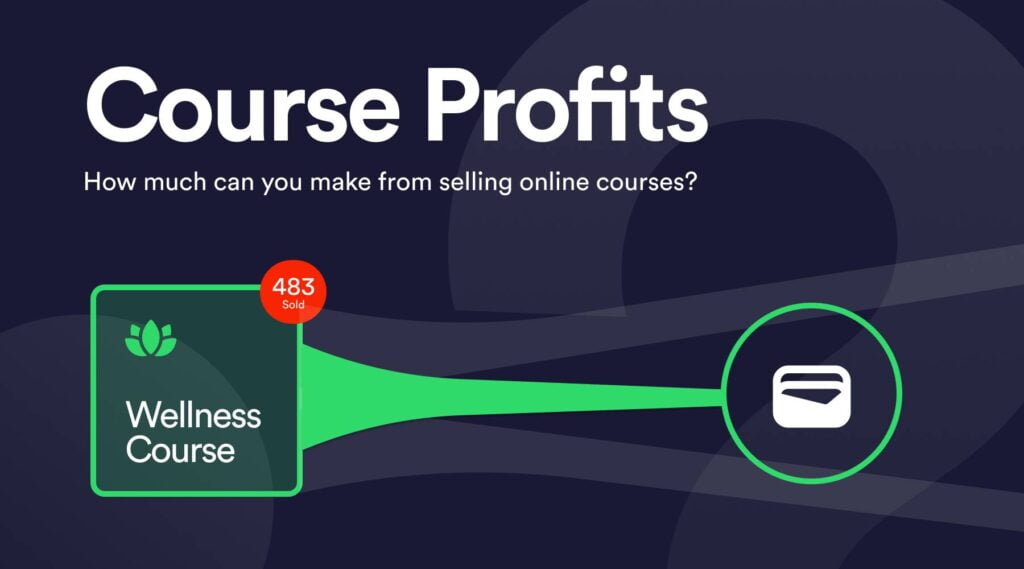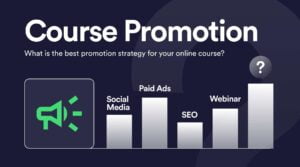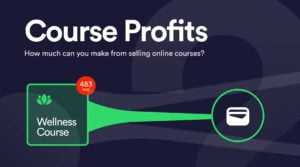Introduction
If you’re reading this article, it’s probably because you know the online course industry is booming, and you want to be part of it.
It’s difficult to say just how big the industry is because the number has most probably changed since you started reading this sentence. A recent E-Learning Industry Analysis by Global Market Insights showed that the e-learning market size was valued at USD 399.3 billion in 2022 and is expected to grow to USD 1 trillion by 2032.
But the burning question remains: Just how much can you make selling online courses? From $1,000 to $100,000 or more per year. It all depends on you. Your earning potential is about more than just knowing how to teach and sharing your knowledge. It’s also, and very importantly, about your marketing finesse and ability to reach your ideal target market.
In this article, we’ll explore the earning potential in the online course market, looking at some of the most critical factors influencing profitability.
Understanding the online course market
 The Current State of the Online Course Market
The Current State of the Online Course Market
Key Players and Niches
Yes, there are many successful and famous people dominating different segments. Instead of seeing it as a threat, competition, or a reason not to create your own course, rather study them, what they offer, and how they offer it. Then, create your niche with your unique talents. If you don’t have a niche yet, ask yourself this: What am I passionate about and can talk about for hours without getting bored or boring others?
Factors Driving the Demand for Online Courses
Accessibility and Convenience
When looking at the benefits of online courses, the convenience factor is right at the top of the list. The ability to learn or upskill from anywhere, at any time, and any pace makes it ideal for working professionals, stay-at-home parents, individuals with busy schedules, or those living in remote places. Being able to fit online learning into one’s lifestyle is not only convenient but also cost and time-effective.
It is not only professionals who turn to online courses to stay on top of their game or acquire new skills to advance in their careers. Many people learn new hobbies and explore new interests online. Whether it’s a one-hour workshop on how to knit or a comprehensive health course that offers certification, there is something for everyone. As a course creator, you must ensure your target market finds you. A win for them and a win for you!
The Diverse Range of Online Course Formats
Now we come to an essential part of your offer, namely, how to present your course. Let’s explore the factors to consider on whether to offer a self-paced course, live webinars and workshops, or a membership and subscription model.

-
Your Course Content
- Self-paced courses are ideal if your content doesn’t require frequent updates or real-time interaction.
- Live webinars and workshops are ideal for topics where people need feedback or hands-on demonstrations and where they can engage in discussions.
- Memberships and subscription models are suitable for content that evolves and where learners want to stay up to date with the latest trends.
-
Your Teaching Style
- Self-paced courses are a good fit if you prefer a one-and-done approach to content creation and enjoy working independently.
- Live webinars and workshops will work best if you thrive on real-time interaction with your audience and where you enjoy and are comfortable teaching in a live setting.
- Memberships and subscription models are a good choice if you want to engage with your audience regularly, provide ongoing support, and foster a sense of belonging.
-
Revenue Potential
- Self-paced courses can generate revenue as long as they remain relevant, however, the initial course creation may require a significant upfront investment of time and resources.
- Live webinars and workshops can generate higher revenue due to their real-time interaction, but it will require ongoing marketing efforts to fill each session.
- Memberships and subscription models offer a recurring revenue stream, but building a sizable subscriber base may take time and dedication to keep learners engaged and satisfied.
The good news is that you’re not limited to one format. Consider combining two, or even all three models, to offer a comprehensive learning experience that you can charge more for. Research your competitors to see which format is currently in demand.
Factors influencing earnings from online courses
Course Quality and Content
It’s a given that the quality of your course and the content must be top-class, professional, and relevant to the needs of your target market.
Identifying a Profitable Niche
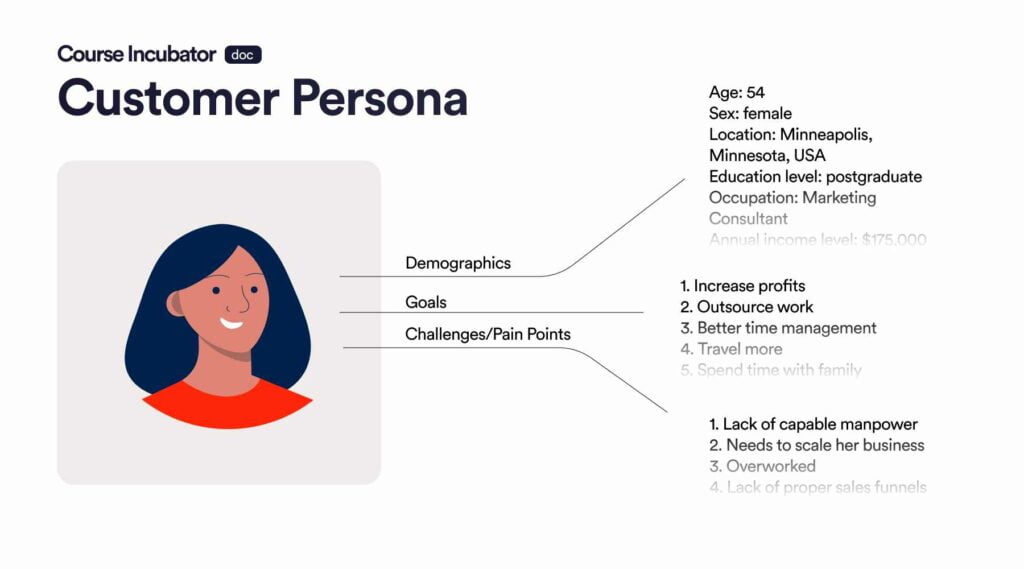
To create a profitable course, you must find a space where your expertise meets the demands of your target audience. Thorough market research will help you identify gaps within existing courses in your chosen field. Use this to your advantage to create a competitive edge your target market can’t refuse.
Creating High-Quality Content
Apart from a demand for what you offer, there are some key cornerstones of a successful online course: it must be well-structured and engaging. Here are some elements to consider when creating your course content:
- Curriculum design: Your course outline must create an a-ha moment for your learners – they must know from the start that they’ve come to the right place. Spend enough time on the sequence of your modules to ensure a logical progression and remember to add the right fillers at the right intervals to keep them engaged.
- Multimedia assets and fillers: Including a variety of elements, such as videos, quizzes, exercises, and downloadable resources, will not only make your course interesting but also enhance learner engagement and boost comprehension. The more value they perceive, the more prepared they will be to pay a higher fee.
- Engaging delivery: We can never stress the importance of understanding your target market enough. The better you know and understand your audience, the better you’ll communicate in a way that appeals to them. Provide relevant examples and address their pain points, interests, goals, and aspirations.
- Evaluations and feedback: This goes both ways. Don’t only evaluate your learners’ understanding at appropriate points but also ask for their feedback on your course and content to improve your offering. Asking customers for feedback and acting on that feedback is one of the best ways to build loyalty and get repeat business.
- Updates and maintenance: The world changes rapidly, so your course content must always stay current. The world is your competition, so committing to keeping your course content up-to-date and staying in touch with your learners’ demands are crucial.
Pricing Strategies
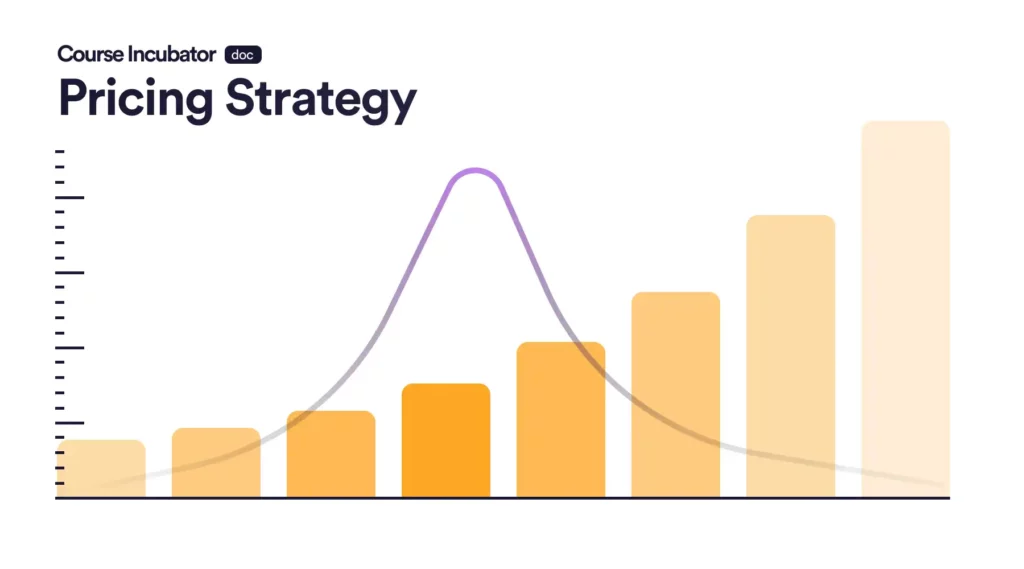
Finding the Right Price Point
Another big question is: How much do I ask for my course? You must balance affordability for your target audience with ensuring your efforts are adequately rewarded. Here are some factors to consider:
- What are your competitors doing?
- What is your target audience willing to invest in their education?
- Does the depth and comprehensiveness of your course justify a higher price?
Discounts, Promotions, and Bundling
You can boost sales and revenue by using discounts, promotions, and course bundling, but be careful how you execute these strategies. Offer limited-time discounts to create urgency and encourage early enrolment but be sure that the discounted price covers your expenses and still yields a profit.
Run targeted marketing campaigns for your course promotions and highlight the unique selling points and benefits to entice potential learners. Where you can bundle related courses or additional resources at a reduced price to encourage upsells.
Expenses
Just like starting any business, there are various expenses to consider when you launch your online course. Let’s look at a few:
- Course development expenses: The three main components of course development costs are content creation (writing and editing content, producing videos and graphic design), the course platform, and purchasing multimedia assets, like images, videos, or music.
- Marketing and promotion: This includes paid advertising platforms like Google and Facebook, email marketing or CRM platforms, copywriters for your website, blogs and promotional material, and graphic designers for branding.
- Legal and compliance: It might be necessary to consult with legal professionals about copyright, compliance, or contracts.
- Other expenses: Seemingly insignificant expenses that can add up include the cost of a domain name, website hosting, and transaction fees for handling course payments.
Marketing and Promotion
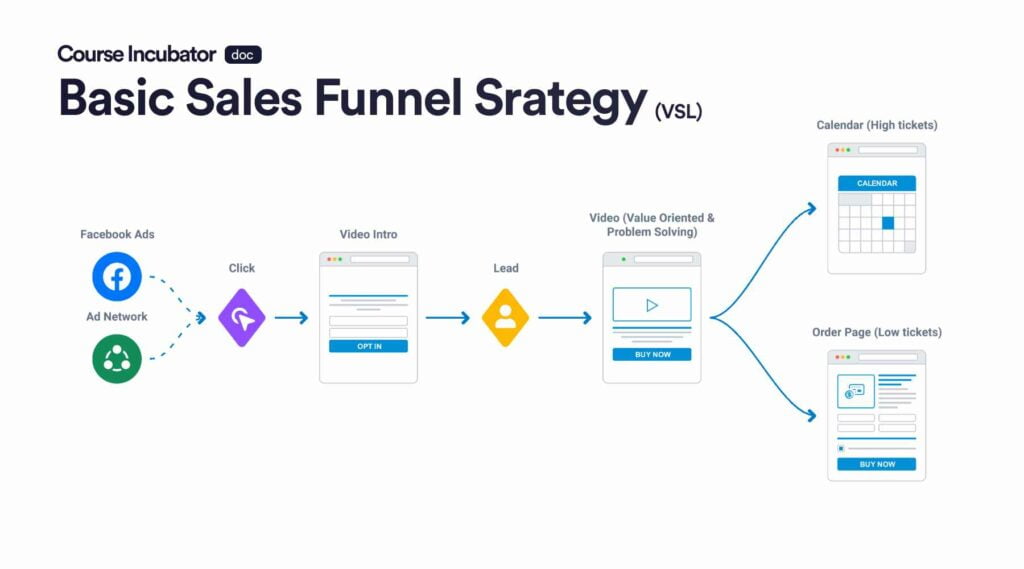
Marketing and promotion are two important pillars that should be considered an investment in your success. What is the point of creating a fantastic and in-demand course if nobody finds out about it?
Think of marketing and promotion as the bridge between the valuable information you want to share with the world and the learners looking for you. Effective marketing is not a luxury – it is a necessity for success. Here are a few points to consider:
Building a personal brand
A strong personal brand builds trust with your target audience and helps you stand out from your competitors. Here are some tips:
- Define your brand identity: Make sure your brand identity sets you apart from your competitors and aligns with your offer, values, and goals.
- Define your unique selling proposition (USP): Clearly define how you address your target audience’s pain points and how your expertise and values can help them reach their goals.
- Consistent online presence: Maintain consistency through your website, social media, and email marketing by sticking to your brand identity and becoming easily recognizable.
- Content marketing: It is imperative to connect with your target audience with content that showcases your knowledge and provides a taste of what learners can expect from your courses. Use blogs, videos on social media and YouTube, and webinars.
- Engagement and interaction: Make sure your target audience knows a ‘real’ person is behind the course. Engage with them promptly and respond to comments, questions, and messages. A personal connection will build trust and loyalty.
- Testimonials and social proof: People value testimonials. Positive feedback serves as powerful social proof for potential students. Always encourage satisfied learners to leave reviews and testimonials.
Utilizing social media and email marketing
Social media and email marketing are the most powerful tools to promote your course. Here are a few factors to consider:
- Platform selection: We go back to the need to understand your target market. Only promote your course on the social media platforms most relevant to your target audience. Consider age, professional status, and the type of course you’re offering. Will they be on Facebook, LinkedIn, or Instagram, for example? Create shareable, informative, and exciting content to draw them to your landing page.
- Email Marketing: Use lead magnets to draw interested prospects to your landing page and get them to leave an email address by offering something free (like an e-book). Build and segment your list to provide value, share success stories, and promote course launches or discounts to the right people at the right time.
Platform Selection
Self-hosting vs. Third-party platforms
Choosing the right platform for hosting your online course is a critical decision. Each option comes with its advantages and considerations:
- Self-hosting: Self-hosting gives you complete control over your course content, branding, and pricing. The one drawback is that it requires technical expertise to set up and manage, and you are responsible for payment processing and security.
- Third-party platforms: With third-party platforms like Thinkific, you may have limited control over branding and pricing, but they are usually easy to use and very convenient. They handle technical aspects, including hosting, payment processing, and security.
Your choice depends on your time, technical proficiency, budget, and the level of control you want. Do your homework and consider the trade-offs carefully when selecting your course hosting method.
Popular online course platforms
Here is a quick review of four of the most popular online course platforms:
- Thinkific is a user-friendly platform known for its customization options. It allows you to brand your course site, set pricing, and create multimedia-rich courses. In addition, it provides marketing tools and analytics to help you track your course’s performance.
- Udemy is a well-known marketplace with exposure to a large user base, but pricing and branding options may be limited. Instructors share revenue with Udemy.
- Teachable is known for its ease of use and comprehensive features, like customization options, marketing tools, and the ability to create sales funnels. It also provides analytics to monitor your course’s performance.
- Kajabi is an all-in-one platform with course hosting, website building, email marketing, and sales funnels. It offers a high degree of customization and control over your course site, but all these features come at a price.
Scaling Your Online Course Business
Here are some practical tips on how to take your online course to the next level:
- Creating multiple courses: A sure way to boost your revenue significantly is to diversify your course offerings.
- Expand within your niche or branch into new niches: Once you have found success in a particular niche, ask your client base how you can address their evolving needs. Alternatively, identify topics that align with your expertise or interests where there is a market demand.
- Course sequencing: Create different courses with a natural progression in complexity and encourage learners to enroll in multiple courses by offering selected bundles at discounts.
- Collaborations: Stop thinking about competition as competition. Broaden your reach by partnering with other experts in your field to co-create courses.
- Evergreen and time-limited courses: Offer both evergreen courses that learners can access at any time and time-limited courses with specific enrolment periods.
Case studies: Real-life success stories
Wellness Industry: From local therapist to $202 608 in 6 months
Research shows that the average conversion rate for online courses is around 1.5%. By adjusting its online course promotion specifically to its target market in France, this wellness company achieved a very healthy (no pun intended) conversion rate of 2.7%!
What were the key areas they focused on? Clear and concise copywriting and branding that resonates with the ideal target market; a captivating landing page focused on building trust; social media campaigns that delivered the best cost acquisition per click; targeted Google and Facebook ad campaigns.
Return on Ad Spend: x3.4
Students: +2,200
Sports Education: From passionate to a six-figure revenue in 6 months
A successful lead generation strategy for a high-ticket product (~$2,590) was one of the reasons this Football Agency generated more than $25,000 a month within 6 months.
What were the key areas they focused on? Website optimization focused on the target market; an easy-to-use User Interface; a sales funnel designed to build confidence in the school; testimonials and case studies; attention-grabbing ads; and distinctive branding.
Return on Ad Spend: x7.4
Students: +224
Estimating earnings potential
Calculating Profitability and ROI
Before we get to profitability and ROI, let’s look at revenue. The formula to estimate revenue is straightforward: Audience Size x Conversion Rate x Price of Course. For example, if you have 1,000 visitors to your sales page, a 1.5% conversion rate, and a course priced at $150, your revenue will be $2,250 (1,000 x 0.015 x $150).
To calculate your profit, you must subtract all your expenses (e.g., production cost (fixed), marketing, and other related costs) from your revenue.
Your return on investment (ROI) is calculated by dividing the profit you earn by the expenses you incurred.
So the aim is clear. Your marketing and promotion must attract as many people as possible to your sales page, where you must convince them that what you sell is what they need, at an offer they can’t refuse, and then dazzle them every step of the way so that they tell others about you.
Challenges and considerations
Competition in the Online Course Space
Staying Ahead of the Curve
We opened this article by discussing the massive boom in the online course industry. Every day, more and more people are buying online courses, and more and more course creators are adding courses for them to buy. You must stay on top of your game and ahead of the curve to stand out. Your course must remain relevant if you want sustained success.
Managing Customer Expectations
We get back to the importance of understanding your ideal target market, their pain points, and their aspirations. The better you understand them, the better you can manage their expectations.
Legal and Compliance Considerations
Be sure that your course content is your own and does not infringe on the Intellectual Property of your competitors. Where necessary, get permission or the proper licensing to use text, images, videos, or other material. Also, take the steps needed to protect your Intellectual Property. Consider the data protection laws and obtain consent for processing (including collection and storage) your clients’ personal information. When working with other instructors or partners, enter into contracts and consider adding a non-compete clause to prevent them from competing with you.
Building a sustainable online course business
The Importance of Continuous Learning and Improvement and Staying Adaptable
You’ve become part of the learning, training, and upskilling business, which also applies to you. To remain relevant and competitive, you must stay updated with the latest trends, developments, and practices.
Nurturing a Community of Learners
If you offer your learners a platform where they can engage, share success stories, and motivate each other, you have a winning recipe to create a community of learners who will be loyal to you. Why not offer them the added benefit of interacting with people from diverse cultural backgrounds to gain new insights and expand their horizons?
Conclusion
Can Online Courses be Profitable?
Yes, without a doubt. But it doesn’t mean it’s going to be easy. You have to think about your target market carefully, what type of delivery best suits your personality and teaching style, always keep track of your income and expenses, stay on top of your game, and invest time and money into marketing and promotion. Look at what your competitors are doing and do better.
Encouragement for Aspiring Online Course Creators
If you are still reading this article, it means you are serious about using your skills and expertise to reach a global market. Regardless of what you offer, there will be an audience eager to learn from you. It might be big, or it might be small. Decide what you wish to achieve with your course. There are many rewards other than the financial gain. Have confidence in yourself and know that you can positively impact many people.
